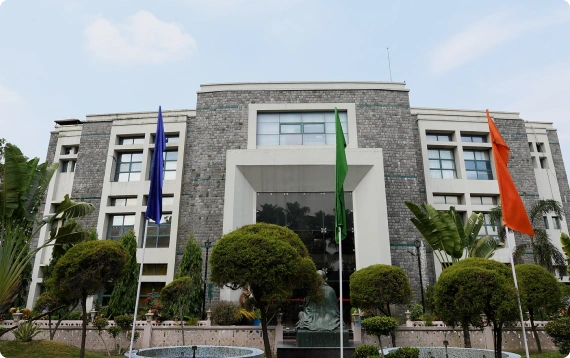Last updated on September 14th, 2023 at 01:32 pm
Web development has caused a seismic shift in the technology industry, radically transforming the way individuals and businesses showcase their products and services to a global audience. Over the past two decades, web development has undergone substantial changes, reshaping the way people interact with the internet and redefining industry standards.
One of the most substantial changes in web development is the advent of responsive web design with the help of frameworks for both front-end and back-end development. In the past, websites were designed with static layouts that could only be viewed on desktop computers.
Websites now are designed with certain technology stacks such as MEAN stack, the MERN stack or the LAMP stack. Read on to know more about these technical acronyms and the ins and outs of each.
MEAN and the MERN Stack
Both the MEAN and the MERN stack have 3 technologies in common with one differentiator, the front-end framework. It is Angular.js for the MEAN stack and React.js for the MERN stack. Let us talk about all the common technologies that both these stacks use, and then dive into the differentiator.
M for MongoDB
MongoDB is a widely used document-oriented NoSQL database system that has gained immense popularity in recent years. It is an open-source, cross-platform database that is designed to store and manage large volumes of unstructured data in BSON format, a binary representation of JSON (JavaScript Object Notation) documents.
This data format supports various data types, including strings, integers, boolean, dates, and arrays, and provides significant advantages over traditional databases, such as easy storage and retrieval of complex data types, as well as faster data access.
MongoDB also offers high scalability and flexibility, allowing it to be easily scaled across multiple servers to handle large volumes of data, making it a powerful and convenient tool for developers.
E for Express.js
Express.js, also known simply as Express, is a popular open-source web application framework for Node.js, a runtime environment for executing JavaScript code outside of a web browser.
Express.js is known for its simplicity, ease of use, and flexibility. It offers a lightweight core that can be easily extended with additional features and plugins. With its flexible routing system, a full stack developer can easily define and configure routes for handling different HTTP requests, allowing easy rendering of dynamic content.
N for Node.js
Node.js is a popular and powerful JavaScript runtime environment that enables developers to build scalable and high-performance web applications and network applications. It operates on the server side and uses a non-blocking I/O, event-driven model, that makes it highly efficient for handling large volumes of data and real-time applications.
At the core of Node.js is the V8 JavaScript engine, developed by Google. This engine compiles JavaScript code into native machine code, enabling Node.js to execute code faster and more efficiently than traditional server-side technologies.
Node.js is often used for building web applications, APIs, real-time chat applications, and microservices, among other things.
A for Angular.js
Angular.js is a robust JavaScript framework developed by Google that enables developers to build dynamic and interactive web applications. It is an open-source framework that provides a plethora of features and tools for building client-side applications.
One of the key benefits of Angular.js is its ability to create dynamic views in real-time. This feature allows users to interact seamlessly with web applications, providing an intuitive and engaging user experience. Additionally, Angular.js can be easily integrated with other libraries and frameworks, enabling developers to work efficiently and effectively.
R for React.js
React.js, or React, is a popular JavaScript library for creating user interfaces. React, which was created by Meta, offers developers a variety of tools and functionalities for creating reusable UI components and effectively displaying them on the web.
React employs a declarative programming approach, in which developers declare how they want their user interface components to appear and behave, and React handles the rest. This method makes it easier for developers to create sophisticated user interface components and maintain their state over time.
The LAMP Stack
The LAMP stack is a widely-used open-source web development stack that consists of four core components: Linux, Apache, MySQL, and PHP.
Linux is an open-source operating system that provides a stable and secure environment for web application development and is mainly used in DevOps development.
Apache is a popular open-source web server that delivers web content to clients over the internet.
MySQL is a powerful open-source relational database management system that provides efficient data storage and retrieval capabilities.
PHP is a popular open-source scripting language used to develop dynamic web applications.
The LAMP stack is a popular choice for building web applications due to its flexibility, scalability, and cost-effectiveness. It provides developers with a solid foundation to build dynamic and robust web applications that can handle a large number of users and traffic.
In addition to the four core components, the LAMP stack also includes a variety of other open-source tools and technologies such as Perl, Python, Ruby on Rails, and more. These additional tools and technologies provide developers with additional flexibility and capabilities to build dynamic and engaging web applications.
Although we hear more about the ‘MEAN’ and the ‘MERN’ stack from a full stack developer, the LAMP stack is still widely used in the IT industry for maintaining the infrastructure of corporations.
Conclusion
Web development has changed the industry by creating new opportunities for businesses and individuals to connect with the world. The evolution of responsive design, web applications, frameworks, cloud computing, and security measures have all contributed to the growth and transformation of web development, making it an exciting and dynamic field.
If you’re looking to become a full stack developer. Look no further than Imarticus Learning's Full Stack Developer Pro programme! This program is designed to provide you with a comprehensive education in all aspects of full stack development, from front-end design and DevOps development to back-end development and everything in between.
During this programme, you'll learn how to use a variety of cutting-edge technologies and programming languages, including HTML, CSS, JavaScript, React, Node.js, MongoDB, and more. You'll also gain valuable hands-on experience through a series of challenging projects that will put your skills to the test. Imarticus Learning also offers you a placement guarantee at the end of this programme.











